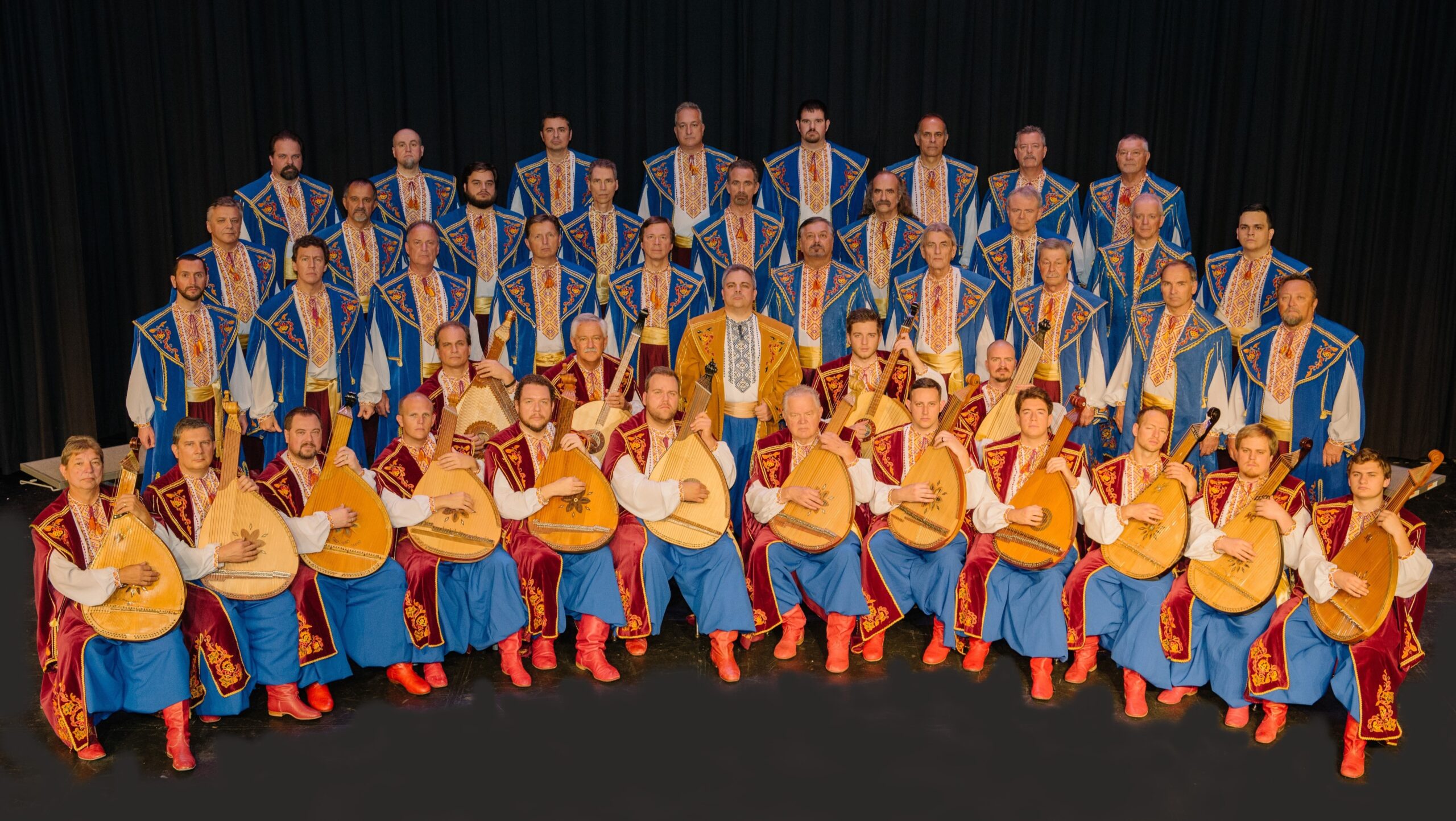The Ukrainian Bandurist Chorus of North America—an ensemble with members in Michigan, Ohio, and Pennsylvania—is one of the recipients of the 2025 NEA National Heritage Fellowships.
The award is considered the highest honor in folk and traditional arts in the country. It is given to those with “artistic excellence, lifetime achievement, and contributions to our nation’s traditional arts heritage,” according to the National Endowment for the Arts (NEA).
Ambassadors for Ukrainian culture, music, and the bandura (a many-stringed lute-harp folk instrument), the men’s choir—known as UBC—is the only collective in the cohort this year alongside seven other individual folk and traditional arts practitioners.
“As stewards of cultural memory, they bring us ‘home’ with dances and songs passed down from one generation to the next. They adorn everyday expressive life with artistry in manual arts, costume, and regalia that animate traditions within communities across America,” says Leia Maahs, NEA Folk & Traditional Arts Director.

The UBC’s 50 or so members, of all ages between 16 through 70, are based in the Great Lakes region but travel the world to perform. Compiled of both singers and bandura players, the group sings in Ukrainian and wears traditional clothing.
The stringed folk instrument was traditionally played by a solitary traveling musician—known as kobzar— who shared songs about Ukrainian history and issues of the times. These lone musicians were often seen as a threat to oppressive regimes.
In 1918, bandurist Vasyl Yemets united multiple individual performers to start the Ukrainian Bandurist Chorus in Kyiv, Ukraine.
The press release stated, “During political shifts in the Soviet regime in the late 1920s, bandura music was banned because of its religious, historical, and Ukrainian patriotic repertoire.”
Displaced by war and fear of persecution, UBC musicians and families were sponsored as one artistic unit to emigrate to the United States in late 1940s, from a refugee camp in Germany. Most of the 17 families settled in Hamtramck, Michigan, where they lived and worked alongside existing Polish and Ukrainian immigrant communities.

Conductor Oleh Mahlay has been the group’s artistic director since 1996. Its recording repertoire includes over 40 albums, and in 2022 the group also received the Michigan Traditional Arts Program’s heritage award.
Other heritage fellows, announced April 17, include: Arizona-based Mexican folk costume maker and dancer Carmen Baron; New Yorker and Haitian dancer, drummer, and artist Peniel Guerrier; California-based Bon Odori artist Adrienne Reiko Iwanaga; bit and spur maker and silversmith Ernie Marsh from Wyoming; Texas-based Creole musician Edward Poullard; and traditional Lakota artist and educator Steven Tamayo (Sicangu Lakota) in Nebraska.
